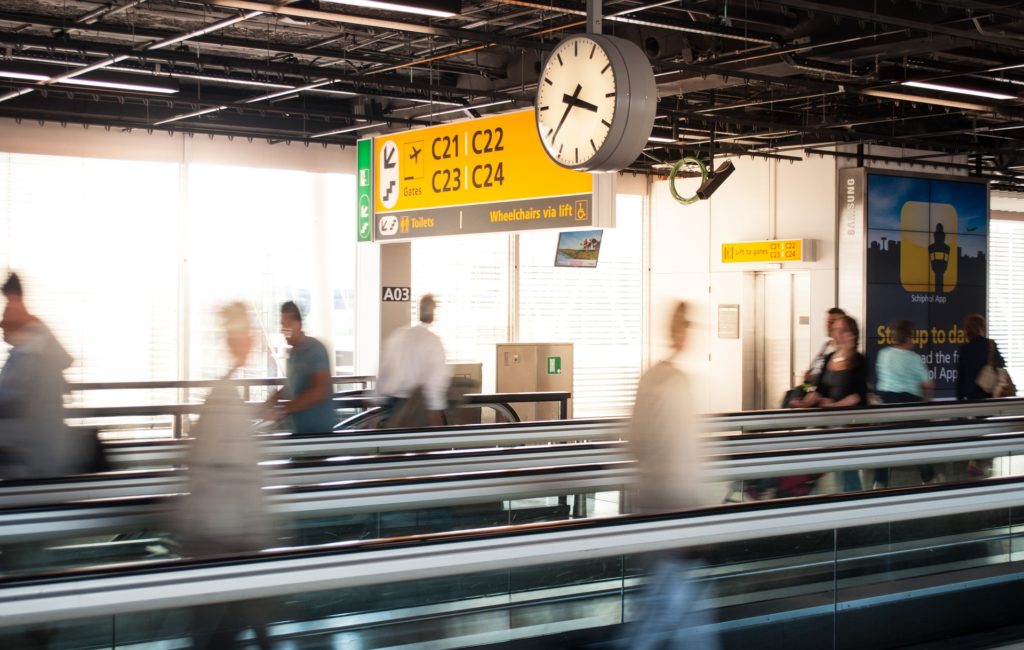Simon Meyer, managing director of aviation solutions at Human Recognition Systems (HRS), presents his top five considerations for implementing a seamless passenger experience at the airport .
With both the aviation and mainstream press awash with the current round of aviation buzzwords (such as seamless journey, biometrics, blockchain, big data and AI) and senior airport and airline executives all pushing to take their airports forward and address the issues of growth and passenger experience, it’s unsurprising that many decision makers may find themselves confused.
The task for those delivering change within airports is to sift out the noise and understand the most practical solution for their individual airport to take this new technology forward, ensuring the lasting transformation of the airport process.
Based on our extensive experience deploying biometric solutions into airports, there are five key challenges that each airport should take into consideration when looking to secure future growth and improvement in passenger experience:
One size doesn’t fit all
This may seem obvious but not all airports are the same. To create a workable solution each airport needs to identify where its main pain point is. This is the beginning of any implementation, taking into account the size of the airport, current passenger numbers, its growth strategy (where does it want to get to in terms of passenger numbers and how quickly), future plans for infrastructure growth (or indeed limitations) and any insight into passenger feedback on the current service provided.
From here, technology can start to provide a solution. For example, technology can be used to help reduce waiting times at security checkpoints by measuring and managing the flow of people into and out of the area. By easing this process, it reduces passenger frustration, creating a much smoother journey and improving overall passenger satisfaction.
In another scenario, transit passengers can be expedited through their journey from terminal to terminal and flight to flight by identifying which passengers need to be prioritized and pre-clearing them through all the necessary processes at the start of their journey. This is particularly important in busy hub airports where a large percentage of passengers are in transit and small delays can have a substantial knock on effect.
Don’t invest because your competitors are
It’s very easy to end up trying to keep up with your neighbors in the world of aviation. With everyone talking about facial recognition and biometrics being the way to ensure the seamless passenger journey, investing in this technology would seem like the most obvious thing to do. After all, nobody wants to be seen as a late adopter.
However, there is something to be said for waiting it out and assessing exactly what solution is right for your situation. Investing in new technology, either software or hardware, should always make commercial sense, backed with a solid business case that supports the growth of your airport. If it’s a vanity purchase, you will soon find that your solution becomes outdated and causes more problems than it solves.
Make sure the new technology fits into other investment plans
If you are investing in the infrastructure of your airport, or making other significant changes to the airport, this could present either additional opportunities or barriers to the introduction of new technologies.
You need to consider whether it would be more beneficial to implement change now to deliver immediate gains in passenger satisfaction or whether waiting for other significant changes in the infrastructure would make the changes more transformative.
Future proofing your solution
Buying hardware is easy but the real value to an airport actually comes from a shared collaborative platform, like the HRS MFlow product, that seeks to address the impact on passengers, processes and technology. Each of these areas needs to be taken into account when looking to make transformative change to an airport, it’s about far more than procuring e-gates that look good to the passenger but don’t deliver much in the way of increased knowledge and value to the airport operator.
Collaboration at the very early planning stage of any transformation with both software and hardware suppliers will see your airport develop a solution that is both future-proofed and game changing.
Right partner + right time = great outcomes
Airports are unlike any other environment when it comes to making significant procedural changes. Most operate 24/7 and are therefore unable to simply ‘close for refurbishment’.
Change needs to work alongside business-as-usual operations and therefore finding a partner who can help to deliver both, in a dual strategy, is vital to the success of any project. All potential partners should be assessed on their ability to deliver an innovative solution to meet your growth requirements while also ensuring that the passenger is put at the heart of any proposals.
Service and quality should never slip, either now or in the future, and working with the right partner will ensure that this remains a key focus for your airport.
Conclusion
Technology can be transformative and create an airport that is both easy to navigate around and relaxing to be in. This is a far cry from most people’s experience of airports where long queues, a lack of information and high stress levels are the common theme.
A vision of the future for aviation should be less about buzz words and more focused on the key issue of moving people around the globe smoothly, efficiently and safely. This goal can be achieved by ensuring that the five key points I have outlined above are all addressed at the outset of any plans rather than implemented retrospectively.
Navigating this space can be difficult for an airport and it is easy to be deflected with the shiny hardware and sales pitches. Picking the right partner with lots of relevant experience and a passion to partner in the right areas can make a real difference in helping define a clear and consistent strategy for the seamless journey, help drive investment that transforms your airport and provide a great seamless experience for passengers.

